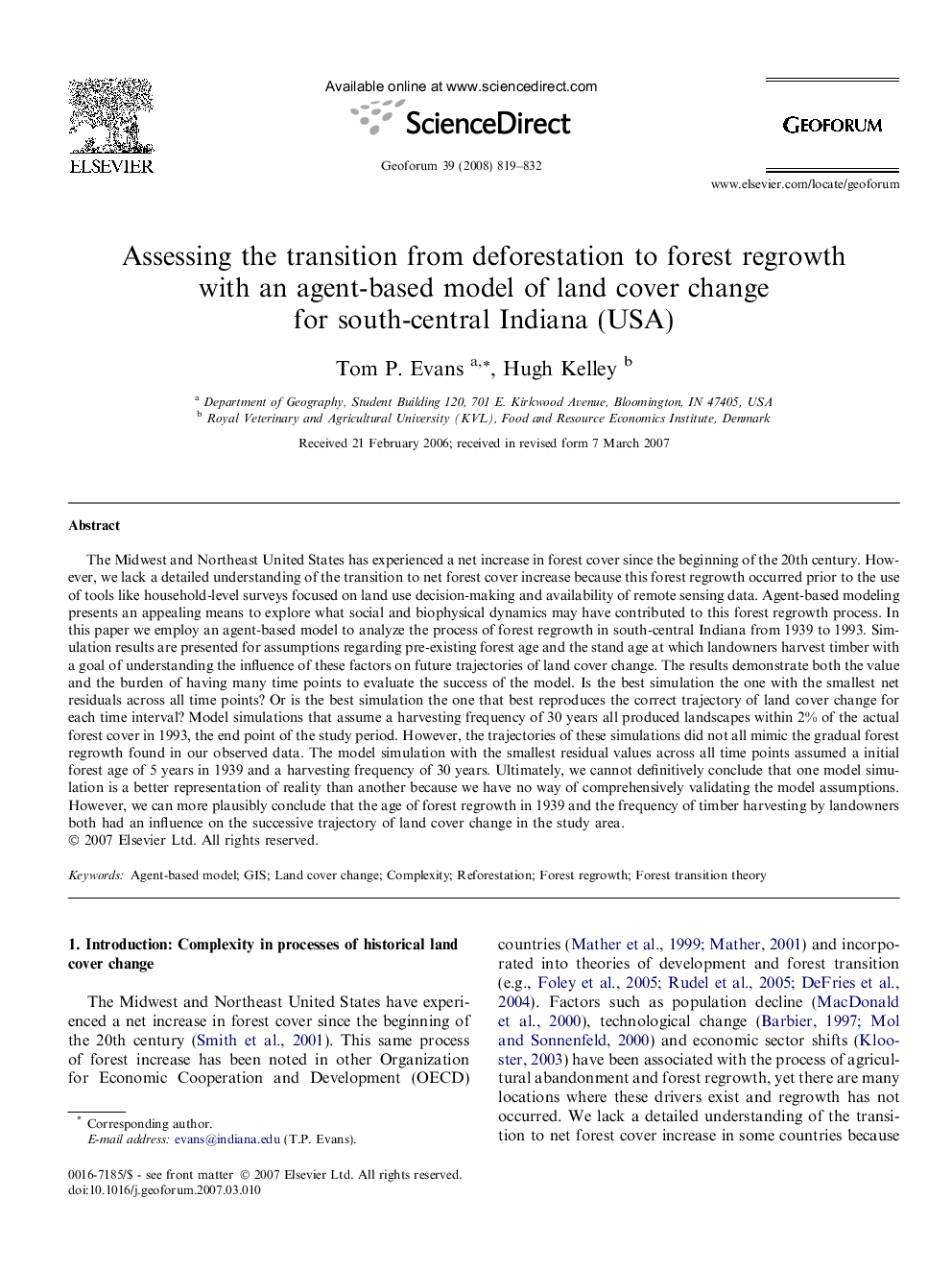| Article ID | Journal | Published Year | Pages | File Type |
|---|---|---|---|---|
| 5074784 | Geoforum | 2008 | 14 Pages |
Abstract
The Midwest and Northeast United States has experienced a net increase in forest cover since the beginning of the 20th century. However, we lack a detailed understanding of the transition to net forest cover increase because this forest regrowth occurred prior to the use of tools like household-level surveys focused on land use decision-making and availability of remote sensing data. Agent-based modeling presents an appealing means to explore what social and biophysical dynamics may have contributed to this forest regrowth process. In this paper we employ an agent-based model to analyze the process of forest regrowth in south-central Indiana from 1939 to 1993. Simulation results are presented for assumptions regarding pre-existing forest age and the stand age at which landowners harvest timber with a goal of understanding the influence of these factors on future trajectories of land cover change. The results demonstrate both the value and the burden of having many time points to evaluate the success of the model. Is the best simulation the one with the smallest net residuals across all time points? Or is the best simulation the one that best reproduces the correct trajectory of land cover change for each time interval? Model simulations that assume a harvesting frequency of 30 years all produced landscapes within 2% of the actual forest cover in 1993, the end point of the study period. However, the trajectories of these simulations did not all mimic the gradual forest regrowth found in our observed data. The model simulation with the smallest residual values across all time points assumed a initial forest age of 5 years in 1939 and a harvesting frequency of 30 years. Ultimately, we cannot definitively conclude that one model simulation is a better representation of reality than another because we have no way of comprehensively validating the model assumptions. However, we can more plausibly conclude that the age of forest regrowth in 1939 and the frequency of timber harvesting by landowners both had an influence on the successive trajectory of land cover change in the study area.
Keywords
Related Topics
Social Sciences and Humanities
Economics, Econometrics and Finance
Economics and Econometrics
Authors
Tom P. Evans, Hugh Kelley,
